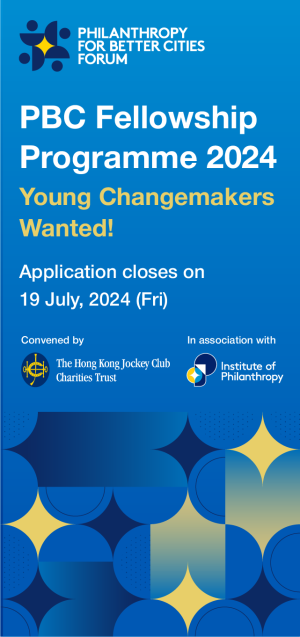A vision for a better world, and unilateral actions are no longer enough to realise true change.
In the wake of large-scale humanitarian need, disruptions in the traditional funding sources, and a growing funding shortfall, non-governmental organisations (NGOs) need to radically change current structures to create sustainable impact.
Donors and philanthropists are thinking more like professional investors, and are seeking more immediate, tangible impact and return on investment in terms of social outcomes.
NGOs and other change makers need to optimise the use of scarce funds and resources, focusing on measurable impact while being accountable, agile, and transparent.
In response, innovative financing such as outcomes-based financing (OBF) has emerged as a powerful approach that aligns resources with concrete developments in areas such as sexual and reproductive health and rights (SRHR), homelessness and energy challenges.
Outcomes Based Financing In the space of OBF, development impact bonds (DIBs) or pay-for-performance models, organisations receive payment for social impact, not mere actions. Which has been a catalyst for innovation within the NGO sector.
Freed from legacy models, organisations can, and must, experiment with new approaches to achieve better outcomes with more targeted, iterative, and effective interventions.
Activating Accountability and Transparency
Innovative financing pushes NGOs to demonstrate impact, and a clear path towards achieving their social mission. This makes them more accountable to funders and donors and encourages continuous improvement and adaptation to ensure programmes are on track for success.
With reliable measurement and transparency as a precondition for innovative financing to work, it is vital that NGOs and their partners create true traceability and measure impact.
By providing verifiable data, the sector can enable confidence that their efforts and donors’ investments are affecting a positive change.
Shifting from Activity to Results
Through smart technology, real time data becomes a guiding light, allowing NGOs to identify interventions that deliver tangible impact, or refine programmes that do not achieve performance targets such as reducing unintended pregnancies, or preventing sexually transmitted infections.
A substantial step we’ve taken is providing our partners and donors with access to a live dashboard, that provides a real-time view of our collective impact. This means that performance issues and operational challenges are identified and immediately addressed, to keep the programme on track.
This improves responses to issues, which can keep NGOs agile, intentional and outcomes based, while improving the overall success of programmes.
For example, in the world’s first adolescent SRHR development impact bonds (DIBs) real-time data collection and evaluation were employed to great success in reaching targets months ahead of schedule. If the data showed a decline in uptake for a certain service, the Tiko platform would alert teams who can dig into potential factors driving the decline.
‘As funders, it’s incredible to see real-time data and insights, to confidently know that we’re investing in real impact,’ says Sophie Hodder, Director, Girl Capital – Africa Children’s Investment Fund Foundation. ‘By the time the 18-month implementation period concluded, we surpassed the total number of sexual reproductive health services targets by 148 percent, and the total repeat visits target by 262 percent.’
This level of data means that the impact of different activities can be closely monitored, for better intervention impact, and to inform future interventions, based on deep insights and validated learnings.
Redefining Partnerships for Success
The social ills NGOs are working to change, are symptomatic of broader system flaws that permeate into many different areas of society. In the case of SRHR, at its core, it saves lives and is central to physical and mental wellbeing but is also directly linked to social and economic development. It impacts young people’s agency and control of their health choices, and paths to do more with their lives.
It is the complex, and multi-faceted nature of NGO’s purpose, that call for collaborative partnerships among, governments, impact investors, and the communities being served.
Excitingly, innovative financing models have proven to be a strong enabler; creating a new type of relationship between donors and partners. With a clear, and specific shared goal; pooling resources, expertise, and networks, stakeholders can achieve significant impact and address complex challenges more effectively – with greater collective influence.
For the first time, the sector is shifting to build systems through collaborations, that address intersectional issues in totality. We’ve always known that we cannot do it alone, but now we’re critically looking at how we can reach our goals together.
In this true partnership dynamic, NGOs are becoming more discerning. Beyond available funding, and a shared vision, the partners need to share a value system, where each player is entrusted to pivot based on insights and the needs on the ground – unrestrictedly, to deliver the right impact.
Innovative financing offers a powerful path towards positive change. It creates a mindset of doing more with what you have ensuring value for money for funders, as capital is invested into achieving goals in the most efficient way.
Serah Joy Malaba is the Chief Impact Officer at Tiko





Comments (0)